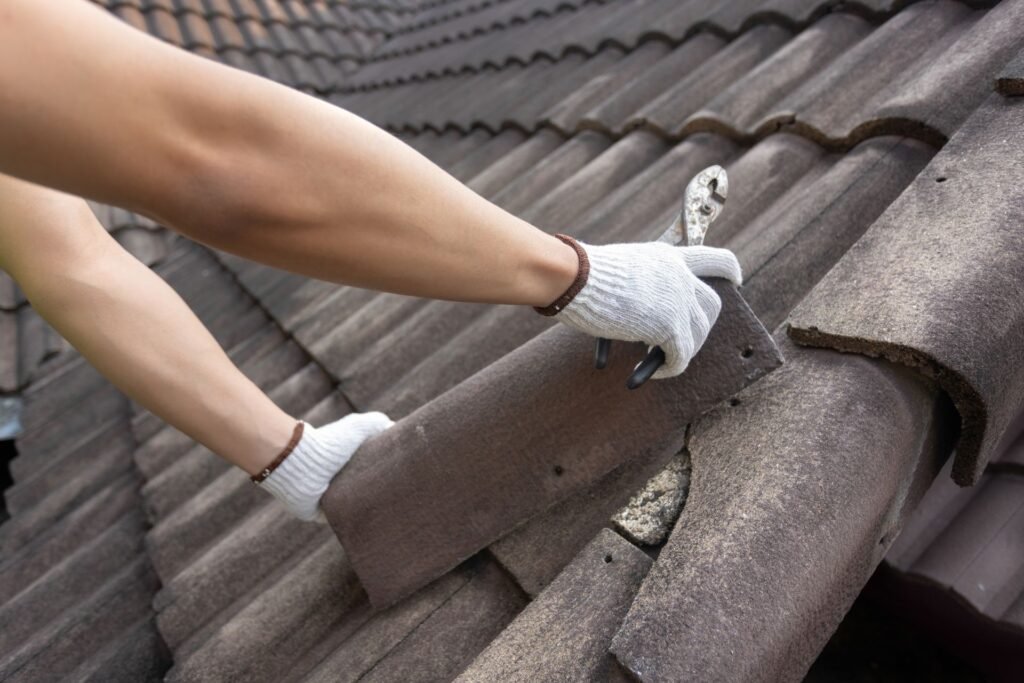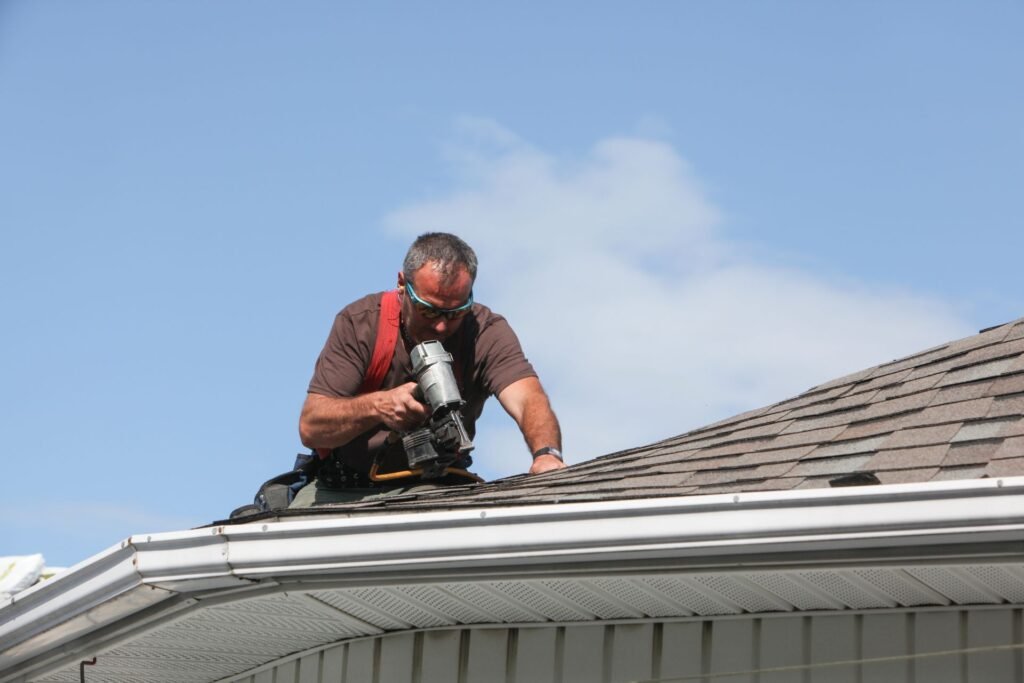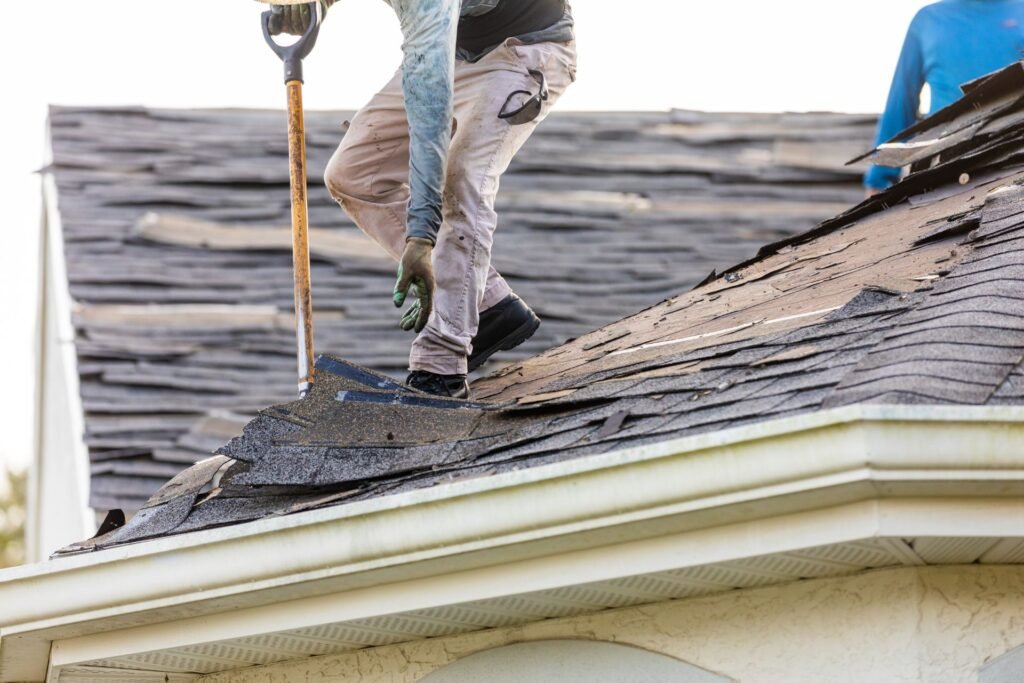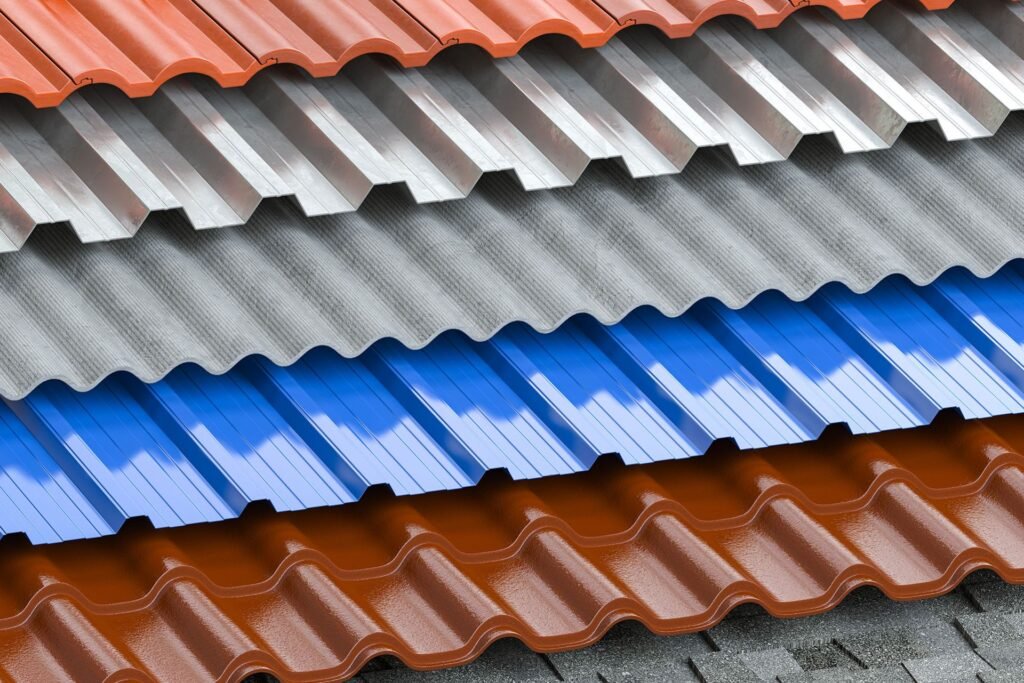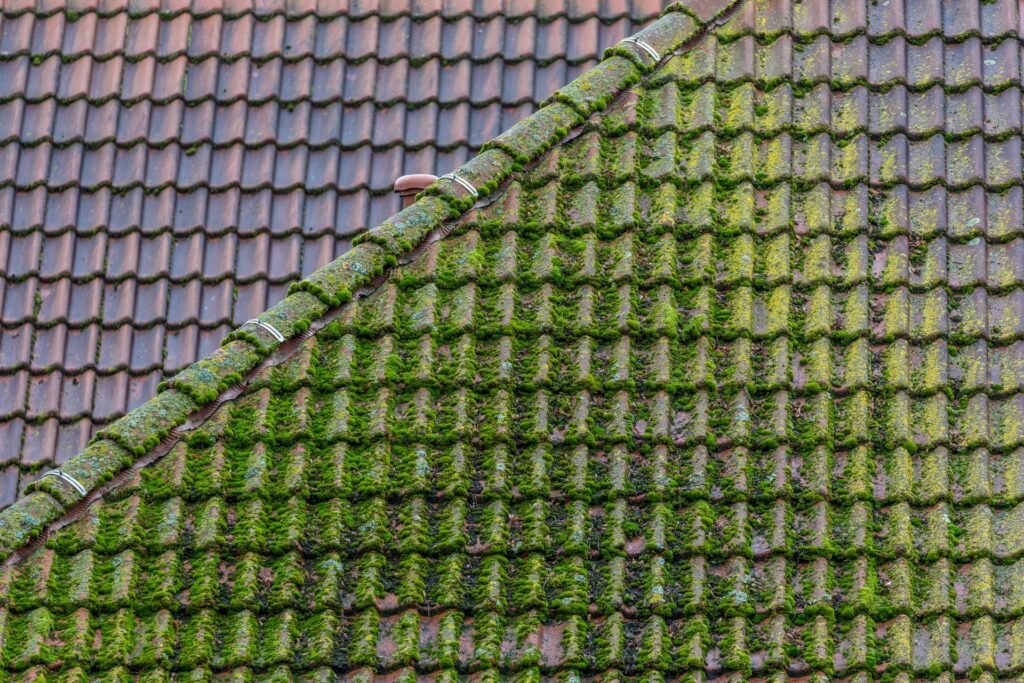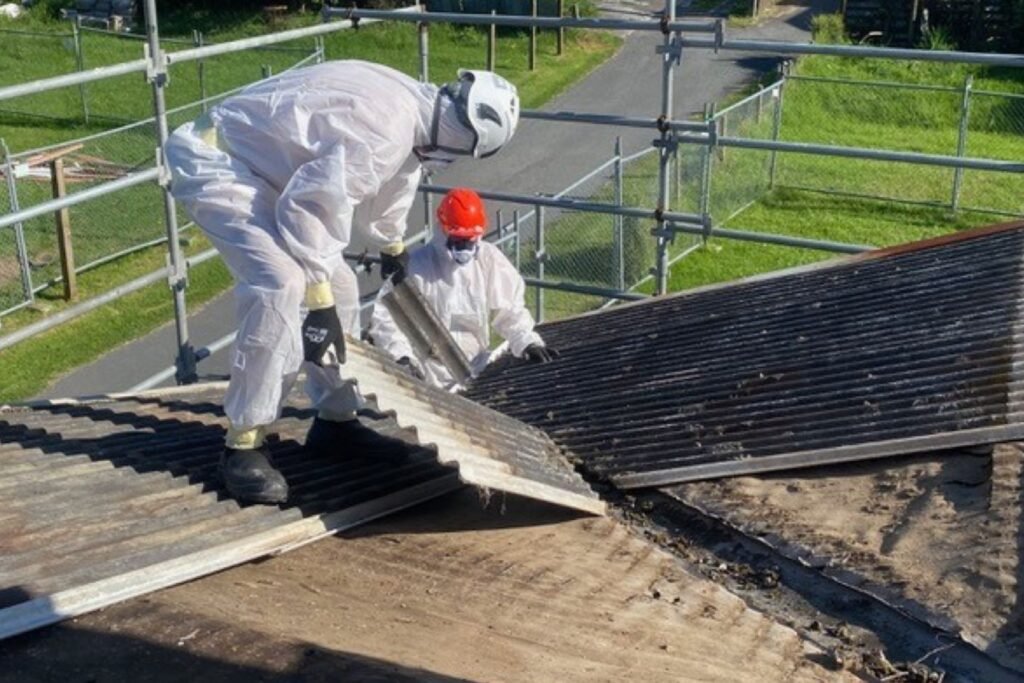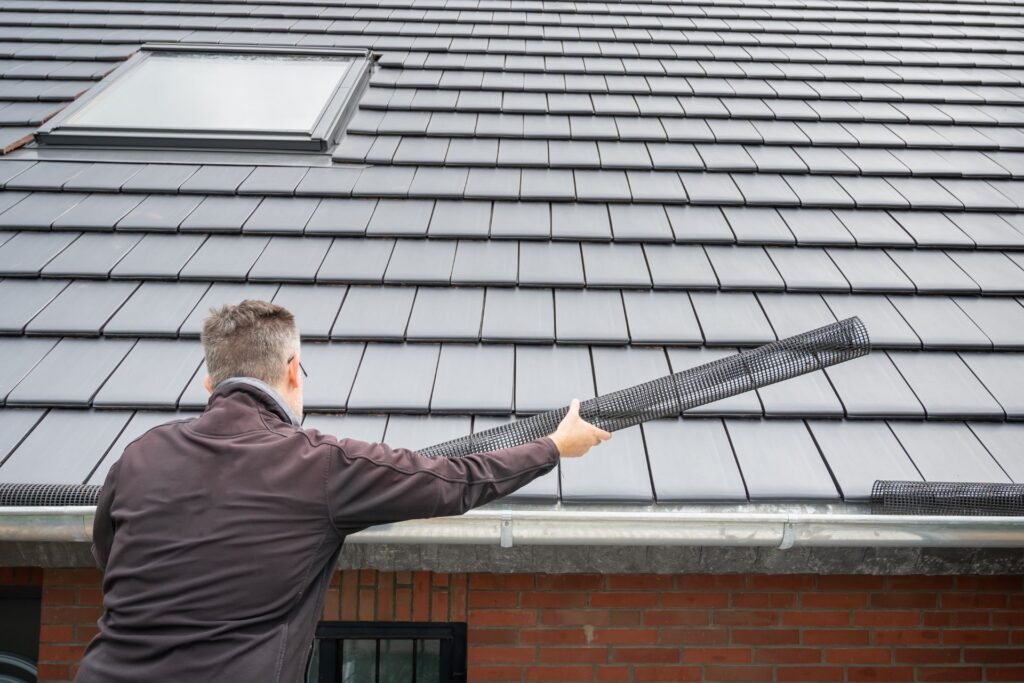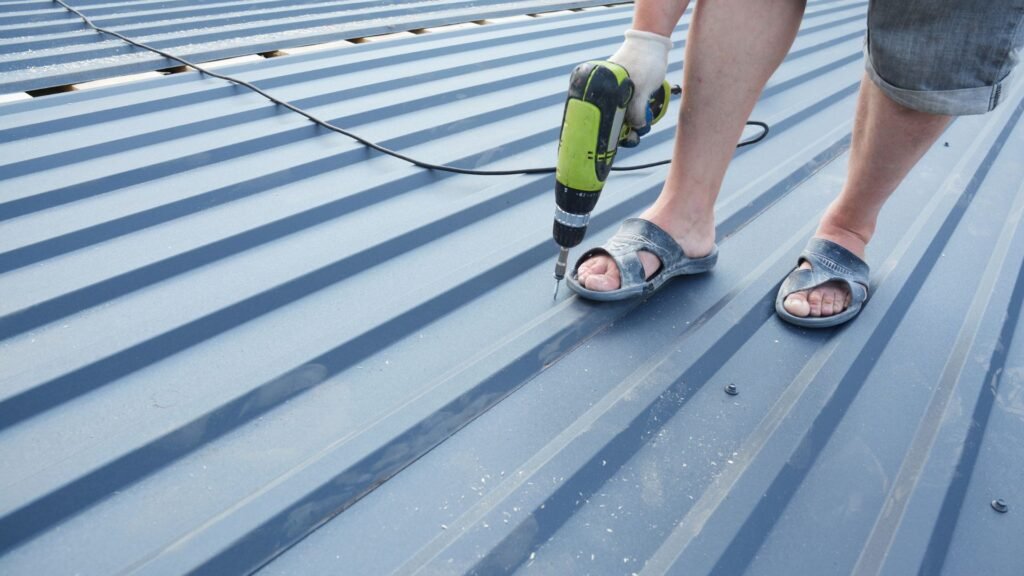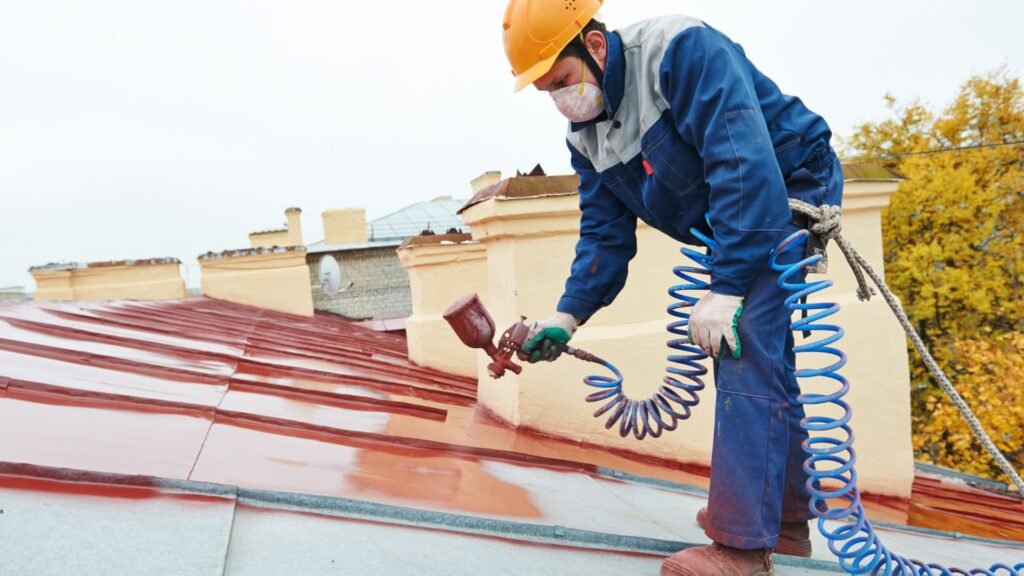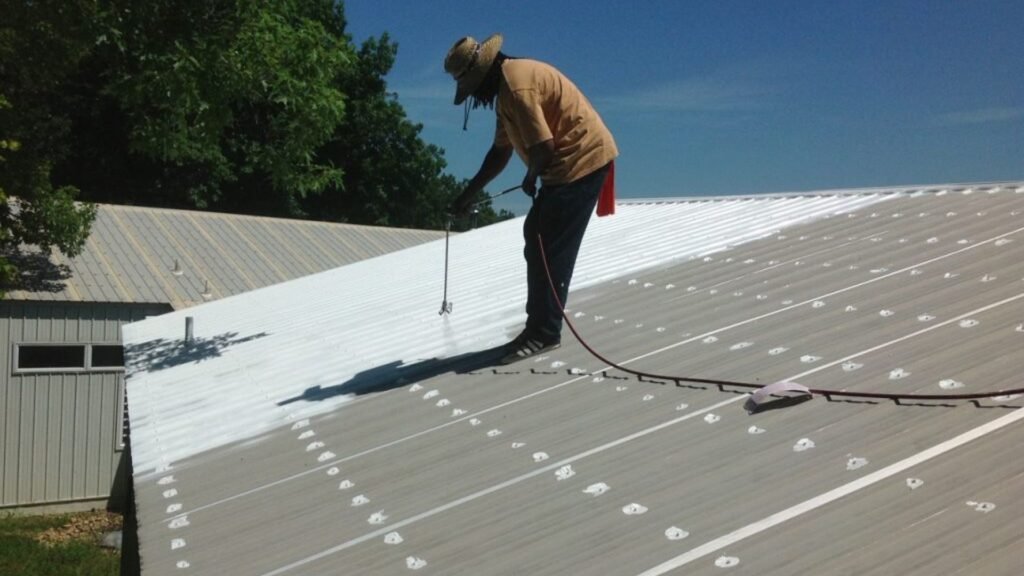Welcome to our comprehensive guide on the cost of painting a roof in New Zealand, where we’ll explore everything you need to know to make an informed decision about this essential home maintenance task. Whether you’re a homeowner looking to enhance the curb appeal of your property, extend the lifespan of your roof, or simply want to protect it from the harsh NZ weather conditions, understanding the factors that influence the cost is crucial. In this post, we’ll break down the various elements that affect pricing, offer tips on choosing the right professionals, and highlight the long-term benefits of investing in a freshly painted roof, ensuring you’re well-prepared for your next roofing project.
The cost of painting a roof in New Zealand typically ranges from $3,000 to $10,000, depending on factors such as the type of roofing material, roof size and complexity, paint quality, and labor costs. Investing in a professional roof painting job can enhance the longevity of your roof, improve energy efficiency, and boost your home’s curb appeal.
Table of Contents
Factors Influencing The Cost Of Painting A Roof In NZ
When considering the cost of painting a roof in New Zealand, several key factors come into play. Understanding these elements can help homeowners make informed decisions and budget effectively for their roofing project. Below, we explore these factors in detail.
Type of Roofing Material
The type of roofing material is one of the most significant factors affecting the cost of painting a roof in New Zealand. Different materials require different preparation and painting techniques, which can influence both the labor and materials costs. For example:
- Metal Roofing: Metal roofs are relatively common in New Zealand, particularly in coastal areas where they resist saltwater corrosion. However, painting metal roofs can be more expensive due to the need for specialized paints that prevent rust and corrosion. Additionally, the smooth surface of metal roofs may require multiple coats to achieve a uniform finish.
- Tile Roofing: Tile roofs, often made from concrete or clay, are also prevalent in New Zealand. These roofs tend to be more porous than metal, requiring more paint to cover effectively. The textured surface of tiles may also necessitate additional labor, especially if the tiles are old or damaged.
- Shingle Roofing: Asphalt shingles are less common but still found in some parts of New Zealand. These roofs are generally easier and cheaper to paint than metal or tile, but the cost can vary depending on the shingle’s condition and the type of paint used.
By understanding the specific needs of each material, homeowners can better anticipate the costs associated with painting their roofs.
Roof Size and Complexity
The size and architectural complexity of a roof are crucial factors in determining painting costs. A larger roof will naturally require more paint and labor, leading to higher expenses. However, it’s not just the size that matters; the complexity of the roof design plays a significant role as well.
- Size: A straightforward, flat roof of 100 square meters will be less expensive to paint than a 200 square meter roof. The larger surface area increases both the amount of paint required and the time it takes to complete the job.
- Pitch: A steeply pitched roof can be more challenging and time-consuming to paint. The angle of the roof may require additional safety measures, such as harnesses or scaffolding, which can increase labor costs.
- Architectural Complexity: Roofs with intricate designs, multiple angles, dormers, or skylights can be more expensive to paint. These features require careful attention to detail and may involve more time-consuming work, such as cutting in around edges or applying paint to difficult-to-reach areas.
For example, a simple gable roof will generally cost less to paint than a roof with multiple valleys, hips, and ridges.
Condition of the Roof
The condition of the roof is another critical factor that influences painting costs. Before any painting can begin, the roof must be in good condition. This might involve:
- Repairs: If the roof has any damage, such as broken tiles, rust spots, or leaks, these issues must be addressed before painting. Repairs can add to the overall cost, but they are essential to ensure the longevity of the paint job.
- Cleaning: A clean surface is necessary for the paint to adhere properly. This might involve pressure washing to remove dirt, moss, algae, or old paint. In some cases, a chemical treatment might be required to remove stubborn growths.
- Priming: Depending on the roof material and condition, a primer may be needed to ensure the paint adheres well and lasts longer. Priming is especially important for porous materials like concrete tiles or surfaces that have been repaired.
Addressing these pre-painting requirements ensures a quality finish but can add to the overall cost.
Paint Quality and Type
The quality and type of paint used for roof painting is a significant cost factor. In New Zealand, where the climate can be harsh, choosing the right paint is crucial.
- Acrylic Paint: Acrylic paints are popular for roof painting because they are durable, flexible, and resistant to UV rays. They are suitable for a range of roofing materials and offer good value for money. However, higher-quality acrylic paints can be more expensive, but they often last longer and provide better protection.
- Enamel Paint: Enamel paints offer a hard, glossy finish that is resistant to weathering and wear. They are typically used on metal roofs and are more expensive than acrylic paints. The additional cost can be justified by the enhanced durability and aesthetic appeal.
- Weather-Resistant Paints: Given New Zealand’s varied climate, it’s vital to use paints that can withstand the local weather conditions. High-quality, weather-resistant paints are more expensive but offer better protection against rain, wind, and UV radiation, extending the life of the paint job.
Investing in high-quality paint may increase the upfront cost, but it can save money in the long run by reducing the frequency of repainting.
Labor Costs
Labor is a significant portion of the overall cost of painting a roof. In New Zealand, labor costs can vary depending on the region, the complexity of the job, and the experience of the painters.
- Regional Variations: Labor costs in urban areas like Auckland or Wellington may be higher than in rural areas due to the higher cost of living and greater demand for skilled tradespeople.
- Professional Painters vs. DIY: Hiring professional painters ensures a high-quality finish and can save time and effort. However, labor costs can be substantial. On the other hand, a DIY approach can reduce costs, but it requires time, skill, and safety precautions, and the results may not be as durable or aesthetically pleasing.
When budgeting for a roof painting project, it’s essential to consider these labor-related factors to get an accurate estimate.
Additional Costs
Beyond the primary costs of materials and labor, several additional expenses may arise during a roof painting project in New Zealand.
- Scaffolding and Safety Equipment: For roofs that are difficult to access or have steep pitches, scaffolding or safety harnesses may be required. These safety measures can add to the overall cost but are essential for protecting the workers and ensuring the job is done correctly.
- Permits: In some cases, especially for larger projects or in certain areas, a permit may be required to carry out roof painting. The cost of permits can vary depending on local regulations.
- Hidden Costs: Homeowners should also be aware of potential hidden costs, such as unforeseen repairs, additional coats of paint required, or extended project timelines due to weather delays. To avoid surprises, it’s wise to include a contingency budget in the overall project estimate.
By considering all these factors, homeowners in New Zealand can better plan for the cost of painting their roof, ensuring that they achieve a durable and aesthetically pleasing result within their budget.

Typical Cost Ranges For Roof Painting In NZ
Cost Breakdown by Roof Type
When considering roof painting in New Zealand, the cost can vary significantly depending on the type of roof. Different materials require different levels of preparation, paint, and labor, all of which contribute to the overall cost. Here’s a breakdown of estimated cost ranges for common roof types in NZ:
- Corrugated Iron Roofs: Typically, painting a corrugated iron roof can cost between $25 to $35 per square meter. This includes surface preparation, primer, and two top coats.
- Concrete Tile Roofs: For concrete tiles, the cost may range from $30 to $40 per square meter. These roofs often require more intensive cleaning and additional coats of paint, contributing to the higher cost.
- Asphalt Shingle Roofs: Asphalt shingles can be painted for around $20 to $30 per square meter. However, it’s important to note that painting is less common for this type of roof, and other maintenance might be more suitable.
- Terracotta Tile Roofs: Painting terracotta tiles is more specialized, with costs typically ranging from $40 to $50 per square meter. These roofs may require special paints and primers designed for the material, increasing the price.
Example Scenarios
To give you a clearer idea of what these costs could look like in practice, let’s consider a few hypothetical scenarios.
Small Roof (100m² Corrugated Iron Roof)
- At $25 per square meter, the total cost would be approximately $2,500.
- At the higher end ($35 per square meter), it could cost around $3,500.
Large Roof (250m² Concrete Tile Roof)
- If the cost is $30 per square meter, the total would be around $7,500.
- If it’s on the higher end ($40 per square meter), you could be looking at $10,000.
Factors Influencing Costs
- Roof Condition: Older roofs or those in poor condition may require more preparation, such as rust treatment or tile replacement, increasing the overall cost.
- Access Difficulty: If your roof is difficult to access due to its height or steep pitch, this might add to the labor costs.
- Location: Costs can vary depending on where you are in New Zealand. For example, roof painting in Auckland might be more expensive than in smaller towns due to higher labor costs.
Comparison with Other Roof Maintenance Options
When deciding whether to paint your roof or explore other maintenance options, cost is a critical factor. Here’s how roof painting stacks up against alternatives like roof replacement or sealing:
- Roof Replacement: Replacing a roof is a much more expensive option, often ranging from $100 to $150 per square meter for materials and labor. This is several times the cost of painting and may not be necessary unless the roof is severely damaged.
- Roof Sealing: Roof sealing is a middle-ground option, costing between $50 to $70 per square meter. While it’s more expensive than painting, it can extend the life of your roof without the need for a full replacement. However, it doesn’t offer the aesthetic refresh that painting does.
Cost-Effectiveness of Roof Painting
- Affordability: Painting is often the most cost-effective solution for maintaining your roof’s appearance and protecting it from the elements.
- Longevity: While not as long-lasting as a full replacement, a well-done paint job can add years to your roof’s life at a fraction of the cost.
In conclusion, painting your roof in NZ can be a practical and economical way to maintain your home. By understanding the typical costs involved and how they compare to other maintenance options, you can make an informed decision that suits both your budget and your roof’s needs.

Benefits Of Painting Your Roof
Painting your roof isn’t just about giving your home a fresh look—it has practical benefits that can enhance the longevity, energy efficiency, and overall value of your property. Let’s explore the key advantages of investing in roof painting.
Longevity and Durability
One of the most significant benefits of painting your roof is the extension of its lifespan. Roofs in New Zealand face a variety of harsh weather conditions, from intense UV radiation to heavy rain and wind. Over time, these elements can wear down roofing materials, leading to cracks, leaks, and other issues. A quality roof paint acts as an additional protective layer, shielding your roof from these elements and preventing premature aging. By keeping moisture and UV rays at bay, roof paint can help maintain the structural integrity of your roof, ensuring it remains durable for many years.
Energy Efficiency
Energy efficiency is another compelling reason to consider painting your roof. In recent years, reflective roof paints have gained popularity for their ability to improve insulation. These paints work by reflecting sunlight away from the roof surface, rather than absorbing it. This can significantly reduce the amount of heat that penetrates into your home, keeping indoor temperatures cooler during hot summer months. As a result, you may find that your reliance on air conditioning decreases, leading to lower energy bills. In a country like New Zealand, where energy costs can be high, this energy-saving benefit is not only environmentally friendly but also cost-effective.
Aesthetic Appeal
Beyond practical benefits, painting your roof can dramatically enhance the aesthetic appeal of your home. A freshly painted roof can transform the look of your property, making it more attractive to potential buyers or simply more pleasing to you as a homeowner. Whether you choose a traditional color that complements the existing style of your home or opt for a bold, modern hue, a well-chosen roof paint can significantly boost curb appeal. This aesthetic upgrade can also increase the value of your property, making it a worthwhile investment, especially if you’re considering selling in the future.
Cost Savings in the Long Term
While the initial cost of roof painting might seem like an expense, it’s important to consider the long-term savings it can bring. Regularly painting your roof can prevent the need for costly repairs and replacements down the line. By protecting the roof from damage and wear, you reduce the likelihood of issues such as leaks, rust, or material deterioration. In the long run, this means fewer repairs and a longer-lasting roof, translating to significant cost savings. Moreover, maintaining a well-painted roof can be far more affordable than replacing the entire structure, making it a smart financial decision for homeowners.
In conclusion, painting your roof offers a range of benefits that go beyond aesthetics. From extending the life of your roof and improving energy efficiency to boosting curb appeal and saving money in the long run, it’s an investment that pays off in multiple ways. Whether you’re looking to protect your home from the elements, cut down on energy costs, or simply enhance the appearance of your property, roof painting is a solution worth considering.

DIY Vs. Professional Roof Painting
When it comes to painting your roof, the decision between doing it yourself or hiring a professional can be a tough one. Each approach has its own set of advantages and disadvantages, which can impact the outcome of your project. Let’s dive into the key considerations.
Pros and Cons of DIY
Benefits of DIY Roof Painting
One of the most significant benefits of tackling roof painting on your own is the potential cost savings. By eliminating labor costs, you can allocate more of your budget toward high-quality paint and tools. For those who enjoy hands-on projects, DIY roof painting can be a rewarding experience, offering a sense of accomplishment when the job is completed.
Additionally, DIY allows you to work at your own pace. You won’t be tied to a contractor’s schedule, meaning you can choose the timing that best suits your availability and the weather conditions.
Challenges of DIY Roof Painting
However, DIY roof painting is not without its challenges. The most obvious concern is safety. Working at heights can be dangerous, especially for those who are not experienced or lack the proper equipment. Falls from roofs can result in serious injury or worse, making safety gear and precautions a top priority.
Another challenge is achieving a high-quality finish. Professional roof painters have years of experience and know the techniques needed to apply paint evenly and efficiently. Without this expertise, you may find that the paint job lacks uniformity or that the coverage is insufficient, potentially leading to premature wear or the need for a second coat.
Finally, DIY roof painting can be time-consuming. If you’re not familiar with the process, what you anticipate to be a weekend project might stretch into several weeks, particularly if you encounter any unexpected issues along the way.
Why Hire a Professional?
Expertise and Experience
When you hire a professional roof painter, you’re paying for more than just labor—you’re investing in their expertise. Professionals have a deep understanding of different roofing materials and know which types of paint and application methods will work best for each. This knowledge can be crucial in ensuring that your roof not only looks great but also stands the test of time.
Specialized Equipment
Professional painters also have access to specialized equipment that most homeowners do not. This includes everything from safety harnesses to spray guns that can cover large areas more efficiently than brushes or rollers. Their tools and techniques ensure a smooth, even application that can be difficult to achieve with standard DIY methods.
Warranties and Peace of Mind
Another significant advantage of hiring a professional is the warranty that often accompanies their work. Most reputable contractors offer guarantees on their services, meaning that if something goes wrong within a specified period, they’ll return to fix it at no additional cost. This peace of mind can be invaluable, especially when dealing with something as critical as your home’s roof.
Cost Comparison
Upfront Costs
At first glance, DIY roof painting may appear to be the more economical choice. The main costs involved are the paint, brushes, rollers, and any necessary safety gear. Depending on the size of your roof and the materials you choose, this could range from a few hundred to a couple of thousand dollars.
Potential Risks and Long-Term Costs
However, it’s essential to consider the potential risks and long-term costs. If the DIY job isn’t done correctly, you might need to hire a professional to redo the work, doubling your initial costs. Furthermore, any mistakes made during the painting process could lead to roof damage, which could be expensive to repair.
Professional Costs
Professional services, on the other hand, will cost more upfront. Depending on the size of your roof and the complexity of the job, you might pay anywhere from $3,000 to $10,000 or more. However, this price often includes the cost of high-quality paint, professional-grade equipment, and the contractor’s expertise. Additionally, the inclusion of a warranty provides added value that can save you money in the long run.
Weighing the Options
Ultimately, the decision between DIY and professional roof painting comes down to your budget, experience, and priorities. If you’re confident in your abilities and have the time and resources to devote to the project, DIY can be a cost-effective option. However, if you value expertise, efficiency, and peace of mind, hiring a professional might be the better investment.
In conclusion, both DIY and professional roof painting have their pros and cons. Careful consideration of the factors discussed can help you make an informed decision that suits your needs and ensures a successful outcome for your roof.

Tips For Choosing The Right Roof Painter In NZ
When it comes to protecting your home from the elements and enhancing its aesthetic appeal, choosing the right roof painter in New Zealand is crucial. Not only does a well-painted roof add to the curb appeal of your property, but it also prolongs the life of your roof. Here’s how you can make an informed decision:
Research and Referrals
One of the first steps in finding a reputable roof painter is thorough research. Start by exploring local roofing companies and individual contractors online. Websites like Google Reviews, Trade Me, or even specialized trade websites like NoCowboys can provide insight into a painter’s reputation. Look for roof painters with consistently positive reviews, paying attention to comments about the quality of work, reliability, and customer service.
Don’t underestimate the power of word-of-mouth referrals. Ask friends, family, and neighbors if they have had any roof painting done recently and if they would recommend their contractor. Personal experiences can often provide the most honest and trustworthy recommendations.
Get Multiple Quotes
Once you have a list of potential painters, it’s time to gather multiple quotes. Don’t settle for the first estimate you receive—compare at least three to five quotes from different roof painters. When reviewing these quotes, consider not only the price but also what is included. A cheaper quote might exclude certain services that could add up later, while a more expensive quote might offer comprehensive services that provide better value in the long run.
Ask the painters to break down the costs, so you understand what you are paying for. Does the quote include materials, labor, preparation, and clean-up? Are there any hidden costs? A transparent quote is a good sign of a trustworthy painter.
Check Credentials and Experience
Before making your final decision, it’s essential to verify the credentials and experience of your roof painter. Check if they are licensed and insured. A licensed painter has met specific industry standards and is more likely to deliver quality work. Insurance is equally important as it protects you from liability in case of accidents or damages during the painting process.
Experience matters in roof painting. Ask how long the painter has been in business and how many roofs they have painted in your area. An experienced painter will likely be more knowledgeable about the types of materials that work best in New Zealand’s unique climate and will have a better understanding of how to deal with any challenges that might arise during the project.
Understand the Contract
Finally, before signing on the dotted line, make sure you thoroughly understand the contract. The contract should clearly outline all the details of the project, including the scope of work, the type of paint to be used, the number of coats to be applied, and any surface preparation that will be undertaken.
Pay special attention to the timeline and payment terms. When will the work start, and how long is it expected to take? What are the payment milestones—do they require a deposit, and when is the final payment due? A clear contract will also include information about warranties. Does the painter offer a warranty on their work? How long is it valid, and what does it cover? Understanding these details upfront can prevent misunderstandings and protect you from unexpected costs.
By following these tips, you can ensure that you choose a roof painter in New Zealand who will provide high-quality work and peace of mind. A well-painted roof is an investment in your home’s future, and selecting the right painter is the first step toward ensuring that investment pays off.

FAQs: About Cost Of Painting A Roof NZ
How much does it typically cost to paint a roof in New Zealand?
The cost of painting a roof in New Zealand generally ranges between $3,000 to $10,000. This cost varies depending on factors such as the type of roofing material, the size and complexity of the roof, the quality of paint used, and labor costs. Smaller or simpler roofs may be on the lower end of this range, while larger or more complex roofs will likely be more expensive.
What factors influence the cost of painting a roof in NZ?
Several factors influence the cost, including the type of roofing material (metal, tile, shingle, etc.), the roof’s size and pitch, the condition of the roof, the quality of paint chosen, and labor costs. Additional costs may include repairs, cleaning, and safety equipment like scaffolding.
Is it cheaper to paint a roof yourself or hire a professional?
While painting a roof yourself may seem cheaper initially, it comes with risks such as safety concerns and potential issues with paint quality and application. Hiring a professional ensures the job is done safely and correctly, with the added benefit of warranties. The total cost will be higher, but the long-term savings from a professional finish can be worth it.
How often should I paint my roof?
In New Zealand, it is generally recommended to repaint your roof every 10-15 years, depending on the type of paint used, the roofing material, and the local climate. Regular maintenance and inspections can help extend the lifespan of the paint job.
Can roof painting improve energy efficiency?
Yes, painting your roof with reflective or heat-resistant paint can significantly improve energy efficiency by reducing heat absorption. This can lower cooling costs during the warmer months and make your home more comfortable.
What is the best time of year to paint a roof in New Zealand?
The best time to paint a roof in New Zealand is during the warmer, drier months, typically from late spring to early autumn (November to April). This ensures that the paint dries properly and adheres well to the surface.
What are the signs that my roof needs painting?
Common signs that your roof may need painting include fading or peeling paint, rust spots (on metal roofs), moss or algae growth, and leaks or other damage. If you notice these signs, it might be time to consider repainting to protect your roof and extend its lifespan.
Does roof painting require any permits in New Zealand?
In most cases, roof painting does not require a permit in New Zealand. However, if significant repairs or modifications are needed before painting, or if the building is a heritage property, you may need to check with your local council to ensure compliance with regulations.
Can roof painting affect my home insurance?
Yes, roof painting can potentially affect your home insurance. Some insurance companies may offer discounts for maintaining your roof, including regular painting, as it reduces the risk of damage. It’s advisable to check with your insurance provider to understand any implications.
Is roof painting environmentally friendly?
Roof painting can be environmentally friendly if you choose eco-friendly, low-VOC (volatile organic compounds) paints. Additionally, using reflective or cool roof paints can reduce energy consumption by keeping your home cooler, contributing to environmental sustainability.
Conclusion
In conclusion, when considering the cost of painting a roof in New Zealand, it’s important to remember the key factors that influence pricing, including roof size, condition, material type, and the complexity of the job. Roof painting isn’t just an expense; it’s a valuable investment that can enhance the longevity and appearance of your property, potentially increasing its market value. If you’re contemplating this upgrade, now is the perfect time to act. Reach out to a professional painter for a detailed quote and take the first step towards safeguarding your home. For those interested in maintaining their roof’s pristine condition, further reading on roof maintenance can provide additional insights.
About the Author:
Mike Veail is a recognized digital marketing expert with over 6 years of experience in helping tradespeople and small businesses thrive online. A former quantity surveyor, Mike combines deep industry knowledge with hands-on expertise in SEO and Google Ads. His marketing strategies are tailored to the specific needs of the trades sector, helping businesses increase visibility and generate more leads through proven, ethical methods.
Mike has successfully partnered with numerous companies, establishing a track record of delivering measurable results. His work has been featured across various platforms that showcase his expertise in lead generation and online marketing for the trades sector.
Learn more about Mike's experience and services at https://theleadguy.online or follow him on social media:



